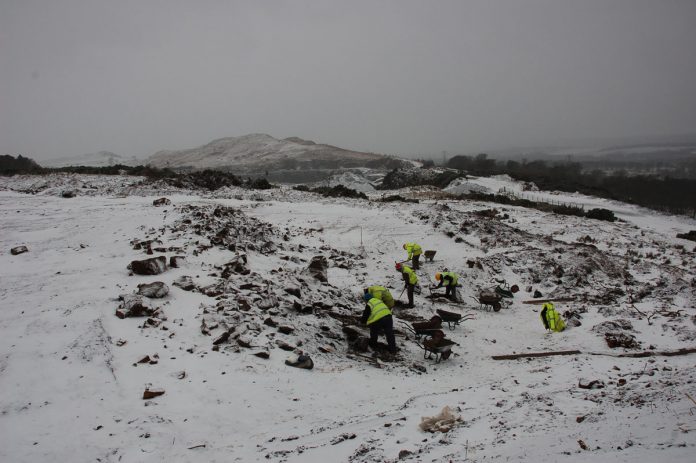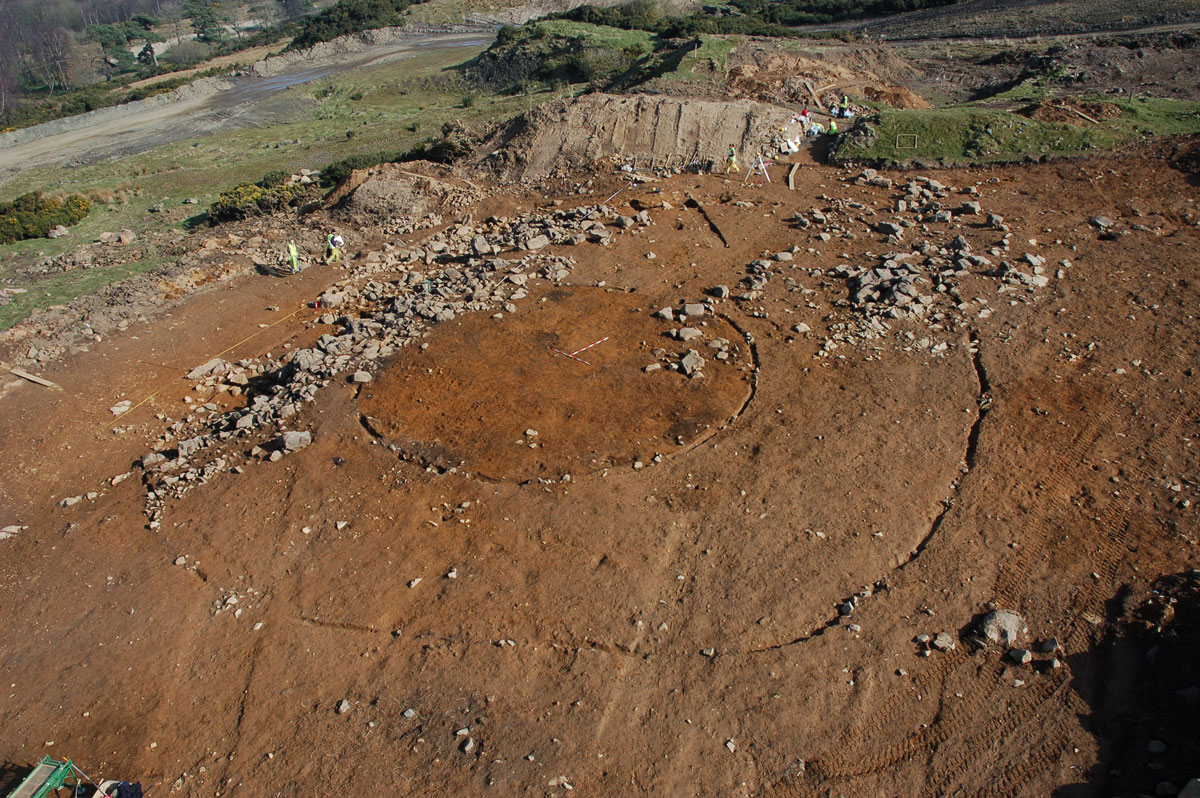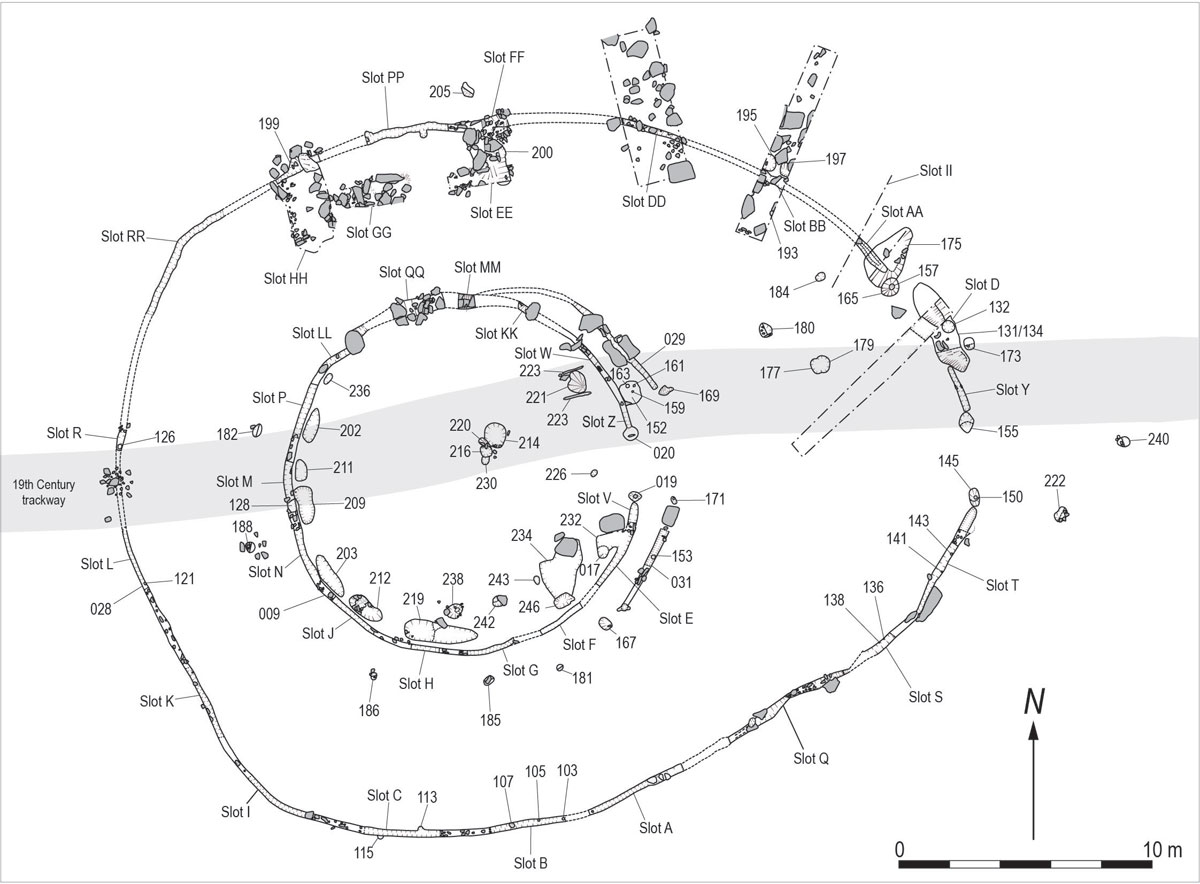The discoveries were made during excavations in 2009, by the former Glasgow University Archaeological Research Division (now GUARD Archaeology Ltd), in advance of the extension of Ravelrig Quarry by Tarmac Ltd. Post-excavation analyses by a variety of specialists, led by GUARD Archaeology Project Officer Christine Rennie, have just been published in the latest volume of the Proceedings of the Society of Antiquaries of Scotland.
The site lies on two terraces on the north-facing slope of Ravelrig Hill, with commanding views over Edinburgh, the Forth valley and the Fife Coast. The settlement comprised an oval palisaded enclosure surrounding a large roundhouse measuring almost 15 m in diameter. Two phases of the roundhouse were apparent, both phases being defined by ring-grooves cut through the underlying bedrock and dated to around 600 – 400 BCE.
Analysis of charcoal and daub revealed that the roundhouse was timber built with wattle and daub walls, and a hearth was found near the centre of the structure. A deposit of domestic waste was found within the interior. A small quern probably used for grinding grain, charred barley grains and hazelnut shells indicate that arable farming and wild foraging were practised, while pollen analysis from Ravelrig bog nearby indicates barley type pollen present though pastoral agriculture was probably dominant in the local area during this period. However the presence of oak in the hearth waste indicates that wild woods still survived in the area around Ravelrig too.
The palisaded homestead at Ravelrig shares similarities with other settlements in eastern Scotland, indicating a continuation of settlement type and construction methods from the Late Bronze Age into the Early Iron Age, a continuity that may also be reflected in the lithic assemblage recovered from the Ravelrig excavation, which conforms to several of the characteristics of Iron Age lithic production.
The analysis of pollen from Ravelrig bog has concluded that the same period, 600 – 400 BCE, when the Ravelrig palisaded settlement was occupied, coincided with agricultural intensification, and so may demonstrate the renewed expansion of settlement into the uplands during the first millennium BC observed elsewhere in eastern Scotland. (see pdf link at end of article)
To the immediate south-west of Ravelrig is the hillfort of Kaimes. Radiocarbon dating from excavations there indicates that this hillfort originated around 400 BCE, just when occupation at Ravelrig ceased. It is possible then that political or social changes in the wider landscape led to the abandonment of the single household settlement at Ravelrig in favour of a more populous and defensive location at Kaimes Hill.
GUARD Archaeology is extremely grateful to Tarmac (Northern) Ltd for funding the excavation, post-excavation and publication of this work. GUARD Archaeology especially thanks Donna Maguire who directed the excavation in 2009. The full results of the excavation can be found in the Proceedings of the Society of Antiquaries of Scotland (Volume 143).
A peat core taken from Ravelrig Bog, west of Edinburgh, contained palaeoenvironmental material spanning the entire Holocene period. Human impact on the landscape is recorded from the Neolithic onwards, with a peak in woodland clearance and agricultural activity in the pre-Roman Iron Age. The last major episode of woodland clearance began around cal AD 1450, with the cleared landscape continuing until the present day. (PDF, 1,513KB)




